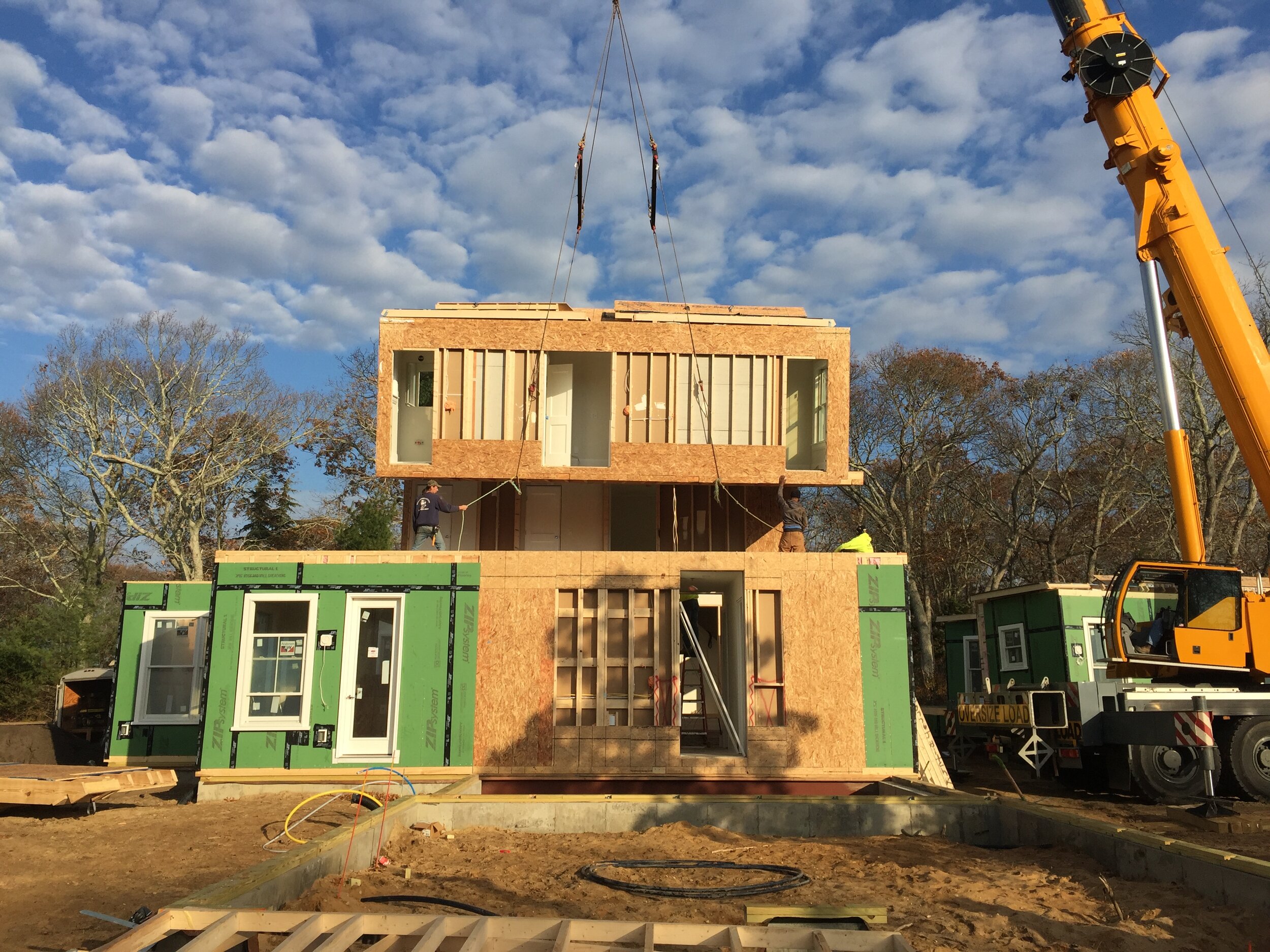Are modular homes safe?
Understanding Modular Home Safety
Each modular home plan is stamped and sealed by a Professional Engineer, ensuring structural integrity.
Modules are designed to endure highway speeds up to 75 mph, requiring stronger framing and more durable construction than traditional site-built homes.
Rigorous Quality Control
Factory Inspections: Each module is examined by a dedicated QC team during various phases of construction in our climate controlled factory to ensure compliance with quality standards.
Third-Party Inspections: Independent inspectors verify that the modules meet all applicable codes:
State Codes
Local Codes
On-Site Inspections: After the modules are installed on the foundation, the homes undergo final inspections by local inspectors to confirm overall integrity and compliance.
Do modular homes perform Better than Site Built homes in A Hurricane?
While no manufacturer would ever be so bold as to say that their homes are hurricane-proof, it has been proved time and again that modular homes stand up to extreme conditions much better than their site-built counterparts.
When Hurricane Sandy hit the northeast and homeowners went to tally up the damage, modular homes fared significantly better. FEMA has continually praised modular construction for sound workmanship dating all the way back to a report they issued back in 1993 about Hurricane Andrew hitting Florida.
FEMA released a Building Performance report in the wake of Hurricane Andrew. The report observed that “relatively minimal structural damage was noted in modular housing developments.” FEMA recognized modular construction for its exceptional strength, noting that the module-to-module connection creates an inherently rigid structural system. In testing conditions that simulate Category 4 hurricane winds (131–155 mph), modular homes were found to outperform traditional stick-built homes, demonstrating superior durability and structural integrity.
Read the full FEMA report of Building Performance here.
Quality Workmanship
Modular manufacturing is subject to the same rigorous quality-control as other high end manufacturing. Since parts and homes are factory-made, there’s no worry that they’ll be subpar. The seals on roofs are done by a factory worker whose job it is to work on roofs all day, every day. Because of this, he has all of the tools, training, and experience he needs to do his job perfectly every time. The same is true for every other step in the modular home manufacturing process.
The report cited that “Much of the damage to residential structures also resulted from inadequate design, substandard workmanship, and/or misapplication of various building materials.” Because of factory construction, a lack of knowledge, skills, or design will never be an issue.
Inspections
Since modular homes are inspected not only by state and local building inspectors, but also at every step of the manufacturing process, they are subject to far more inspections than a site-built home. This is a huge plus since the report also states that “Inadequate training of the inspectors and supervisors are factors that may have contributed to the poor-quality construction observed.”
Site-built homes only have one inspection once the home is completed. In some states, the inspection doesn’t even have to be carried out by a licensed inspector. This one inspector is responsible for checking everything from the roof, to the basement, to the electrical wiring, to the plumbing, and everything else as well. With a modular home, a specialized inspection takes place at every step of construction. These inspections aren’t mandated by the government, but by the manufacturers themselves to make sure that quality is kept as high as possible. Then, once the house is built, it will be given a final inspection just like a site-built home.
Building Design
The FEMA report observed that “relatively minimal structural damage was noted in modular housing developments.” It credited the building style of modular homes because the module-to-module construction provides an “inherently rigid system.” Despite the 131-155mph winds of a category 4 storm, FEMA reported that modular homes “performed much better than conventional residential framing.”
A powerful resilience strategy is elevating living spaces above flood risk by using garage or foundation volumes as the first floor, and stacking modular modules above. This two-story over garage design keeps critical wiring and living areas safely elevated, while giving full use to ground-level storage or parking. We’ve used this approach in our Jersey Shore custom modular two-story over garage project, demonstrating that modular homes can be designed not only for aesthetics, but for flood resilience and compliance in coastal zones.


